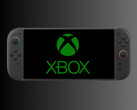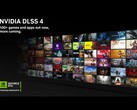The Nintendo Switch 2 promises impressive performance like docked 4K output and up to 120 fps. Rumored to use an Nvidia Tegra T239 processor, DLSS upscaling could maximize the handheld's potential. Recently, Nintendo finally confirmed that the Switch 2 specs include support for the technology. Now, Cyberpunk 2077 developer CD Projekt Red has told Digital Foundry that the action RPG takes advantage of DLSS.
The developer isn't clear about whether a new version of DLSS optimized for the Switch 2 exists. Still, gamers will find it available in handheld and docked performance and quality modes. The admission means the title is the first confirmed Switch 2 game to utilize DLSS. The idea has been debated, with Switch 2 handheld demos showing a mostly steady 40 fps. Since the Steam Deck struggles to meet that benchmark, DLSS could explain the enhanced performance. That said, it's uncertain if upscaling is evident during Cyberpunk 2077: Ultimate Edition footage.
During the latest Digital Foundry Direct podcast, the analysts reviewed videos to look for traces of DLSS. With upscaling active, gamers may see objects with deformed edges. However, except in a few instances, the use of Nvidia's upscaling was undetectable. Low-quality motion blurring may obscure this evidence in the Switch 2 game. Also, when DLSS outputs images at lower resolutions, pinpointing these fine details is more difficult.
The Cyberpunk 2077: Ultimate Edition developer also corroborated Switch 2 performance targets. Gamers can choose a 30 fps quality mode or a 40 fps performance mode (likely at 120Hz) when docked. The output signal is 1080p with the aid of DLSS. As a handheld, players can still expect 30 fps at 1080p in quality mode. On the other hand, performance mode lowers the resolution to 720p to achieve 40 fps.
Nintendo remains hesitant to share specifics about Switch 2 specs. Still, as more journalists test the console, it should become apparent how other games benefit from DLSS.





















































